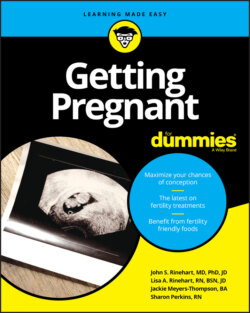Читать книгу Getting Pregnant For Dummies - Sharon Perkins - Страница 128
Changes in age
ОглавлениеUnless (or even if) your last child was born six weeks ago, time does march on! And from an infertility point of view, that’s never a good thing. One of the primary reasons for secondary infertility is the age of the mother. But put this into perspective. If you had your first baby at 27 and now are trying for number 2 at 30, age is not the issue. However, if you had your previous child at age 38 and now you are 41, age becomes a major issue.
Age-related male infertility can also be a consideration, although Father Time does seem to be a bit more forgiving when it comes to the dads. Regardless of whose age we’re discussing, by definition, both you and your partner (should both parties remain the same!) will be older when you try to conceive your next child. As we have seen in preceding chapters, fertility declines throughout the years, so the baby that popped up so easily in your 20s may not be as forthcoming in your 30s or 40s. The longer the interval between children, the more likely that time is not on your side. The fact that you have conceived, carried, and delivered a baby are certainly positive predictors of your ability to do so, but realize that many cite the age of the mother as the primary reason for reproductive success. Is this true? Only time will tell.
One interesting way to look at the effect on age is to look at the IVF data that the Society for Assisted Reproductive Technologies (SART) publishes. SART divides people using IVF into age-based categories. If you take the average delivery rates for each age category and graph them, they are almost a straight declining line. For the under-35 crowd, the average is about 45 percent per try. For the 45-and-over crowd, the average is 0. So for the ten years that this represents (35–45), there is a 45 percent drop, which because it is linear means that each year represents a 4.5 percent loss in fertility potential when using IVF. Based upon this logic, at age 38 your chance of a live birth using IVF is close to 20 percent per try, but by age 40 this has declined to 10 percent. So, in just two years your chance of success has been cut in half.
Remember, your age isn’t an admonishment. Family planning is all about the spacing of children to fit with your lifestyle, finances, and capabilities. Having children back-to-back is not necessarily the best thing to do, for your health and well-being and that of your family. Most physicians recommend a minimum of one year in between pregnancies in order to allow your body to heal. Considering that sex is a no-no for the first six weeks after delivering, those who have a ten-month difference in the age of their children are ignoring someone’s advice. While age is certainly a large factor in planning your family, it can’t be the only thing.
So what now? You’re older and having problems. As with primary infertility, if you are over the age of 35 and have not conceived after trying naturally for six months, it may be time to visit your primary care physician, OB/GYN, or reproductive endocrinologist. They will likely run the same battery of tests on you that they would on a patient who presented with primary infertility. Be patient. You want a thorough report, not a speedy one. Two weeks won’t make a difference!
